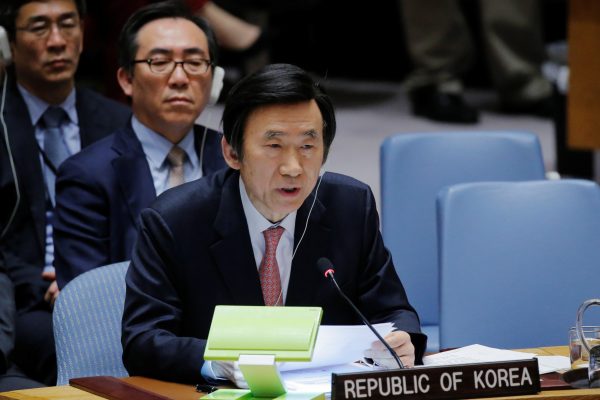But does more need to be done?
The KNDA has established a reputation for research by opening centres for diplomatic history, international law and consular affairs. It has also established a reputation for training by recruiting officer candidates as well as providing ongoing training for mid- and senior-level diplomats, public officials and foreign diplomats.
Foreign ministries across the globe are currently under pressure to transform. Policies related to alliances, trade and people movement are being questioned, as are practices bound by status, hierarchy, secrecy and sovereignty. Foreign ministries need to be more responsive to change.
South Korea is in a particularly difficult position because of its bureaucratic culture that emphasises seniority and stability over success and achievement. It has a conservative, risk-averse ministry unable to rapidly respond to change. A good example of this is South Korea’s use of social media in foreign policy.
Social media challenges diplomatic norms that are inherent in traditional foreign ministries. It requires giving responsibility to junior officers, communicating directly with the public, taking risks and accepting that mistakes will be made. South Korean diplomats on postings are not prolific users of Twitter or Facebook. Yet other countries have not only accepted the risks associated with social media, but have prepared strategic plans to respond to them. Without social media, it’s more difficult for a country to control policy narratives and persuade partners of the need for policy action.
So what can the new South Korean administration do? There are three core initiatives to stimulate diplomatic innovation that it should pursue.
First, the new administration should establish an ‘Office for Innovation and Best Practice’ within the Ministry of Foreign Affairs (MOFA). Similar programs underway in different countries are trying to reorganise the traditional balance between geographic and thematic desks within the foreign ministry, reconstitute consular affairs into a whole-of-government ad-hoc taskforce structure, privatise or share specific components of consular functions with partner countries and better utilise information and communication technologies. A foreign ministry office with a strong mandate to research, recommend and oversee the implementation of innovation and best practice would ensure South Korea does not miss out on evolving opportunities to improve policy and practice.
The second initiative is closely connected to the first. The new administration should seek to establish a culture of innovation and adaptability within the foreign ministry. There is a plethora of studies on how to encourage innovation in the private sector that recommend measures such as allowing the ideas of operational employees to bypass overworked mid-level supervisors, redefine employee performance metrics to place greater value on creativity, give employees the time and space to develop ideas, and experiment and facilitate innovation by challenging the conservative conventions of office environments. These studies apply equally to the public sector.
It’s difficult to imagine MOFA encouraging employees to spend a summer experimenting with social media or filling Seoul’s government offices with gumball machines, brightly coloured wallpaper and oversized bean-bags. Yet some foreign ministries are heading down this path with efforts to rapidly support innovation-related queries, assist in program design and provide guidance on how to turn ideas into policy. Such programs encourage a culture of innovation and adaptation, which ultimately lead to improvements in policy and practice.
Third and most importantly, the next administration should establish a South Korean diplomatic studies research hub to work with the KNDA. It can grow in fertile soil amongst the educational and think-tank institutions of the Asia Pacific. .
Since the International Studies Association established a section for diplomatic studies in 1996, the field has grown substantially. Yet foreign academics are still struggling to find partners to conduct meaningful research on diplomatic practice in South Korea. A diplomatic studies hub would allow innovative ideas to flow through to decision-makers, improving policy and practice.
During the early 2000s, defence ministries across the globe actively pursued innovation as part of the ‘revolution in military affairs’ — a transformation in military doctrines, strategies and tactics emanating from changes in information technology. Today, information and communication technologies, such as social media, big data and the ‘internet of things’ are pushing a ‘revolution in diplomatic affairs’. South Korea has the opportunity to be at the forefront of this emerging revolution. A more innovative ministry will strengthen its capacity to address the momentous foreign policy challenges facing this next administration.
Jeffrey Robertson is Visiting Fellow at the Asia-Pacific College of Diplomacy, The Australian National University and Assistant Professor, Yonsei University. He is author of Diplomatic Style and Foreign Policy: A Case Study of South Korea (Palgrave, 2016).
A longer version of this piece was first published here in South Korea Economic Institute of America’s Academic Paper Series.

